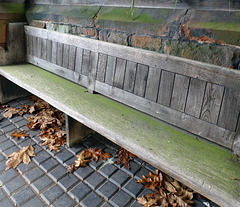Amelia's photos
The Weir on Christmas Eve
| |
|
|
|
Forbidden Fruit. hFF to you all from Ruyton XI To…
| |
|
|
|
Wishing you all a Happy Winter or Summer Solstice.
These are a few of my favourite December things
| |
|
|
|
Frosty Fence Post
| |
|
|
|
HBM from Chirk Castle
| |
|
|
|
hFF from Ruyton XI Towns
| |
|
|
|
Forest men on a canal narrow boat
| |
|
|
|
Don't step out the door.
hFF from Ruyton XI Towns
The sun sets on November
| |
|
|
|
HBM. Lychgate in Ruyton
| |
|
|
|
Culzean Castle Battlements
Culzean Castle
| |
|
|
|
Culzean Castle (pronounced Cullane) is a romantic fantasy castle created by Robert Adam in 1772-1790 for the 10th Earl of Cassillis. Culzean is notable for its elegant oval staircase, circular saloon, painted ceilings and delicate friezes, this is one of Adam's greatest creations.
More about the history here: www.britainexpress.com/attractions.htm?attraction=1203
Santa's beard is missing. hFF to you all
| |
|
|
|
Researchers say wool could replace plastic rope in seaweed farms.
www.bbc.co.uk/news/uk-england-gloucestershire-63656278
Could this be a breakthrough, changing from plastic rope to a far more environmentally friendly solution.
MORT SAFE in AYR. hWW to you all
| |
|
|
|
Lychgates or corpse gates are relatively unseen in a Scottish church. It's thought that Cromwell's influence at the time of building may have caused this to be erected here. This a really good example of a mortsafe in a corpse gate in Ayr
On each side of the corpse gate you can see a large black ironwork structure. This is a mortsafe, which was extremely common in Scotland. Early 19th century Scotland was plagued with body snatchers. Medical science was moving on at such a pace that universities could no longer keep up with the need for bodies to dissect. Scottish law required that corpses used for medical research should only come from those who had died in prison, suicide victims, or from foundlings and orphans. The shortage of corpses led to an increase in body snatching by what were known as "resurrection men". Measures to ensure graves were left undisturbed, such as the use of mortsafes exacerbated the shortage. This gave rise to the terrible trade of body snatching whereby newly buried bodies would be dug up and sold to the universities.
In this very graveyard, relatives of the newly deceased would take it in turns to watch the graves. This could be done for weeks after the burial until the body was too badly decayed to be of use.
If you couldn't afford that, you could use a mortsafe like the one hanging on the wall shown in the photo. This heavy cast iron frame was clamped around the coffin before burial, thus preventing the body snatchers from opening the coffin. As the weeks passed and the body became decayed, the coffin was dug up and the mortsafe removed ready to be used again.
The Ayr mortsafe, pictured dates from 1816. How gruesome is all this?
The Bridge over the River Tern at Attingham Park
| |
|
|
|
The River Tern at Attingham Park
| |
|
|
|
Here at Attingham Park access to the deer park is not available because there have been cases of Bovine TB, and the deer are being culled. We didn't even have the privilege of listening to and seeing the rut. At weekends it is possible to walk on the other side of the river Tern but certain areas are still out of bounds. We haven't seen deer here for almost 4 weeks now.
The deer park was established in the early 1800s by 2nd Lord Berwick and is home to the Attingham fallow deer, which are descendants of the original deer herd. I hope they are soon able to eliminate the TB, and allow us the pleasure of the full 4 mile walk around the parkland and woodland.


















